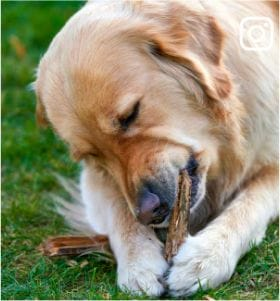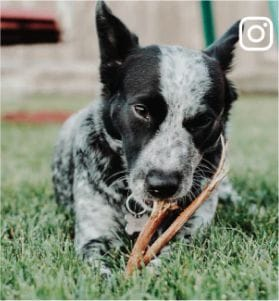Page Not Found!


Pigs Ears for Dogs: Are They a Safe and Nutritious Treat Option?
As dog owners, we're always on the lookout for healthy and tasty treats to spoil our furry friends. Pigs ears have gained popularity as a natural and protein-rich option that dogs can't resist. These chewy treats not only keep our pets entertained but also come with a range of health benefits.
What are Pigs Ears?
As the name suggests, pigs ears are the actual ears of pigs, which become a chewy treat option for dogs after a thorough cleaning and drying process. Since they are unprocessed and free of artificial additives, pigs ears offer a natural alternative to many other dog treats on the market.
These treats are prepared by first removing any hair, then boiling and dehydrating the ears to achieve the desired texture. This process helps to retain the nutrients while making them safe and enjoyable for your furry friend.
Nutritional Benefits of Pigs Ears

Not only do dogs love the taste and texture of pigs ears, but these treats also pack a punch when it comes to nutrition. Pigs ears are high in protein, an essential nutrient for dogs that helps maintain their muscle mass, supports their immune system, and keeps their coat shiny.
Furthermore, pigs ears contain essential vitamins and minerals like vitamin B and zinc. Vitamin B is vital for energy production, while zinc promotes healthy skin and a strong immune system.
Another noteworthy benefit of pigs ears is their dental health advantages. Chewing on these treats helps to remove plaque and tartar buildup, leading to fresher breath and healthier teeth and gums. So, while your dog enjoys this tasty treat, they're also giving their teeth a good cleaning!
Are Pigs Ears Safe for Dogs?
While pigs ears can be a great treat option for dogs, it's essential to consider some safety precautions. First, always ensure that the pigs ears you choose are high-quality, natural, and free from harmful additives. This will minimize the risk of any adverse reactions or digestive issues.
Another safety concern is the potential choking hazard associated with pigs ears, especially for small dogs or aggressive chewers. To prevent choking, you can opt for smaller or thinner pigs ears, or cut them into manageable pieces before giving them to your dog. 🩹
Lastly, always supervise your dog while they enjoy their pigs ears treat. Monitoring your pet ensures they're chewing safely and helps you spot any issues early on. By taking these precautions, you can treat your furry friend with confidence!
How to Choose the Best Pigs Ears for Your Dog

Selecting high-quality and natural pigs ears is crucial to ensure your dog enjoys a safe and nutritious treat. To make the best choice for your furry companion, consider the following factors:
- Size and thickness: Pigs ears come in various sizes and thicknesses, so choose the appropriate size for your dog to minimize choking hazards. Smaller dogs may need thinner ears, while larger dogs can handle a thicker, more substantial treat.
- Natural and additive-free: Opt for pigs ears that are free of artificial additives, preservatives, and chemicals. This ensures a healthier treat option for your pet.
- Reputable seller: Purchase your pigs ears from a reliable seller who prioritizes quality and safety. Look for customer reviews, certifications, and transparent ingredient sourcing to make an informed decision.
By keeping these tips in mind, you'll be well on your way to finding the perfect pigs ears treat for your canine companion!
How to Introduce Pigs Ears to Your Dog's Diet
When introducing new treats like pigs ears into your dog's diet, it's essential to do so gradually to avoid upsetting their stomach. Follow these tips for a smooth transition:
- Start small: Begin by giving your dog a small piece of the pigs ear to see how they react to the taste and texture. This also allows you to monitor for any allergic reactions or digestive issues.
- Increase gradually: If your dog enjoys the treat and shows no adverse reactions, you can slowly increase the size and frequency of the pigs ears in their diet. Remember to adjust their main meals accordingly to maintain a balanced diet.
- Moderation is key: While pigs ears can be a delicious and nutritious treat, it's important not to overindulge your dog. Limit their consumption to prevent excessive calorie intake and potential health issues.
Alternatives to Pigs Ears for Dogs

If you're looking to diversify your dog's treat options, there are plenty of high-protein and natural alternatives to pigs ears. Here are some examples:
- Bully sticks: These treats are made from the pizzle of a bull and provide a high-protein, low-fat option for dogs. Similar to pigs ears, they also promote dental health through chewing.
- Sweet potato chews: If you prefer a plant-based option, sweet potato chews are a fantastic choice. They're high in fiber and packed with essential vitamins and minerals.
- Fish skins: Fish skins like cod or salmon are another protein-rich option that boasts Omega-3 fatty acids, which promote skin, coat, and joint health.
Exploring a variety of treat options for your dog not only keeps them excited but also provides a well-rounded diet with different nutrients. So, feel free to mix and match treats to keep your furry friend happy and healthy!
Time to Treat Your Pup!
Pigs ears are a favorite among dogs, loaded with protein and essential nutrients. Besides the taste, they promote dental health by reducing plaque and tartar. For safe and quality treats, always consider factors like natural ingredients and reputable sellers. Dog Chits provides top-notch pigs ears and diverse treats like bully sticks and New Zealand lamb lungs, ensuring your pup's health and happiness. Introduce them gradually to your dog's diet, and be mindful of portion sizes. Let's treat our beloved dogs with delicious and healthy options they'll surely love!FOLLOW FELLOW DOGGIES ONLINE @DOGCHITS









